By Philip Cauchi
Title: Soccer-specific high intensity endurance
Aim: To develop the players’ ability to perform many quality soccer actions per minute.
Introduction: The following practice develops the players’ ability to perform many soccer actions per minute but also for them to quickly adapt and adjust their position according to the needs of the team in a specific situation. The communication channels between the players, both verbal and visual will be overloaded. The below training load is just an example. The training load should be adjusted according to the physical conditioning level of the players. It should also be taken into consideration the load of the session as a whole, this exercise and the rest of the training session. This exercise should not be carried out in less than seventy two hours following a match, as the body needs to be adequately recovered from the metabolic stress, and in not less than seventy two hours prior to the next match as we require that our players will be totally fresh.
Training load:
Area of practice: A square with the sides measuring 25 to 30 yards.
Sets: 1.
Repetitions for each set: 5 to 8.
Duration for each repetition: 4 to 6 minutes.
Rest between repetitions: 2 to 3 minutes.
Rest between sets: 3 to 5 minutes.
N.B. During the practice the team positioned on the perimeter will be actively recovering.
Description: We will go through this exercise a step at a time with the guidance of the respectives diagrams.
Below is the setup of the pitch. Each side is marked in a different color using markers. A number of balls are positioned beyond each side to allow for a better flow of the session. Two mini goal posts are positioned on each side.
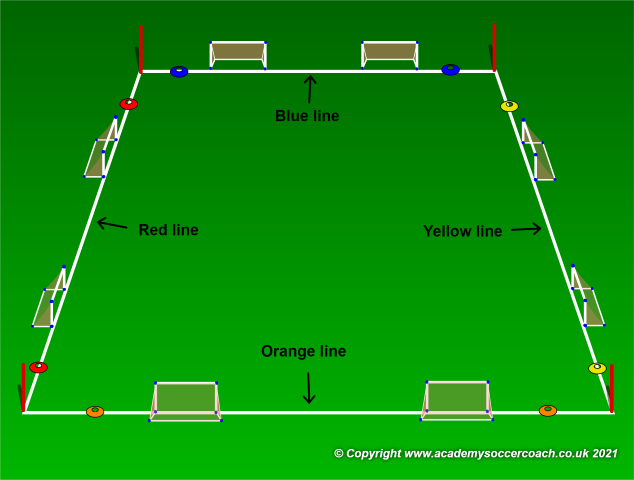
Two teams play against each other with the third team positioned around the marked area as shown in the below diagram. The players of the third team positioned on the perimeter have a ball ready at their feet.
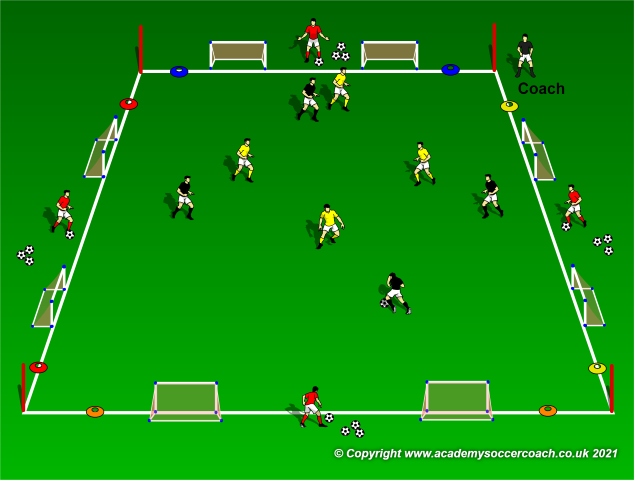
The game is on with one team aiming to score in one direction and the other team aiming to score in the opposite mini goalposts. The red players are the third team and they play with the team in possession. However the red players are not allowed to score.
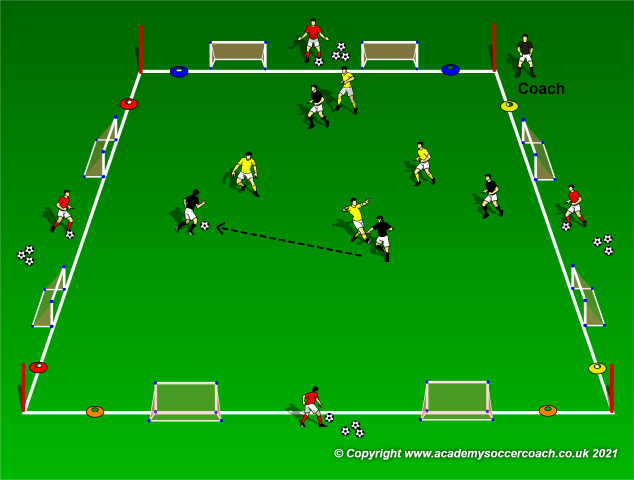
We can have the red players not participating in play so to overload further the players and play 4v4. In this case we should play with a shorter duration for each repetition.
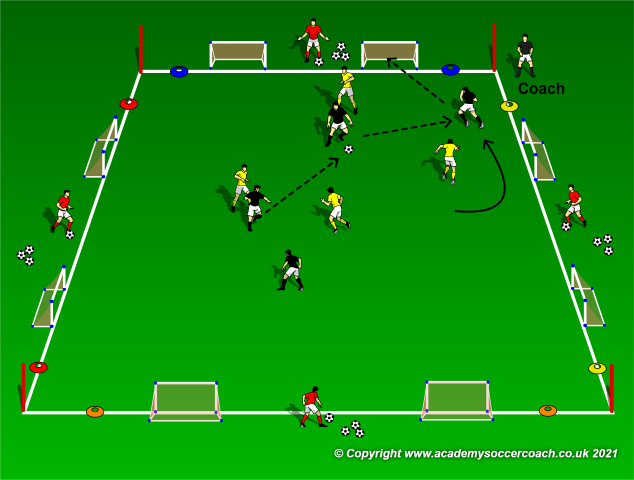
A goal is scored! The team that scored the goal remains on the pitch but has to quickly defend against the red team. We can modify the game and have the coach calling the team who remains on the pitch even when a goal is not scored.
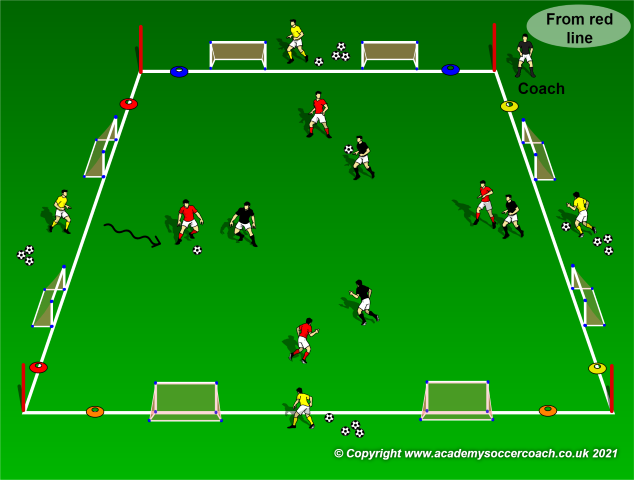
The coach calls out “Attack from the red line!” which means that the red team starts their attack from the red line, who should then protect the goals positioned on this line and attack the goals positioned on the opposite line (the yellow). The black team defends the two goals the red team are attacking on and scores in the two goals that the red team are defending. This means that in the previous game against the yellows the black team were defending the two goals positioned on the orange line and attacking the two goalposts positioned on the blue line. Now the orientation has changed for them. They defend the goals positioned on the yellow line and attack the two goals positioned on the red line. The yellow team (the team that conceded the goal) take the roles that the red team were previously occupying.
By Philip Cauchi


